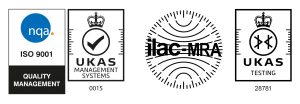As advances with technology evolve, the adoption of lithium batteries continues to grow. Whether it be electric cars, electric bikes, laptops, mobile phones, power banks or toys, lithium batteries are used as a power source in products and devices now more than ever.
As lithium battery technology changes, so too can the regulations. In order to keep up with advanced technologies, transport regulations for shipping lithium batteries evolve to ensure batteries continue to be shipped safely.
There are a number of significant changes and amendments to the 63rd Edition (2022) IATA regulations. Here we summarise those changes relating to Lithium Batteries.
Changes applicable to UN 3480 Lithium ion batteries PI 965 & UN 3090 Lithium metal batteries PI 968
Section II has been removed from PI 965 & PI 968. To provide shippers with time to adapt their processes to ship lithium cells and batteries in accordance with Section 1B of PI 965 and PI 968 changes, a 3-month transition period was allowed which comes to an end 31st March 2022. This means from 1st April 2022 standalone lithium batteries (not packed with equipment or contained in equipment) are only permitted to be sent by sections 1A & 1B.
Amendments have also been made to 1.6.1, Special Provision A334, 7.1.5.5.1, Table 9.1.A and Table 9.5.A to reflect the deletion of Section II of PI 965 & PI 968
Changes applicable to UN 3481 Lithium ion batteries packed with equipment PI 966 & UN 3091 Lithium metal batteries packed with equipment PI 969
IATA also announced an important update for those shipping lithium batteries packed with equipment.
In order to make the packing instructions clearer for shippers, IATA have revised and reworded PI 966 & PI 969 to clarify the packing options for Section I and Section II.
Packaging options in Section I has been reworded to illustrate:
The lithium cells or batteries are completely enclosed in inner packagings then placed in a packaging that meets the Packing Group II performance standards, then placed with the equipment in a strong rigid outer packaging.
Or
The cells or batteries are completely enclosed in inner packagings then placed with the equipment in packaging that meets the Packing Group II performance standards.
The packing options in Section II previously showed two packing options but these have now been updated to show:
Cells or batteries must be completely enclosed in inner packagings then placed with the equipment in a strong rigid outer packaging.
Changes took effect from 1st January 2022. You can also view a short video created by IATA explaining changes to PI 966 & PI 969.
To raise awareness and assist Shippers in understanding the requirements related to the transport of Lithium Batteries, IATA has prepared an updated lithium-battery-guidance-document which includes packing instructions and FAQ’s. It is free to download and offers guidance in summary based on the 63rd (2022) Edition of the IATA Dangerous Goods Regulations (DGR). Check out the recent lithium battery dangerous goods regulations here.
Other resources for IATA lithium battery regulations can be found on the IATA website.
Information correct at time of publishing, 22nd March 2022
 UK
UK


